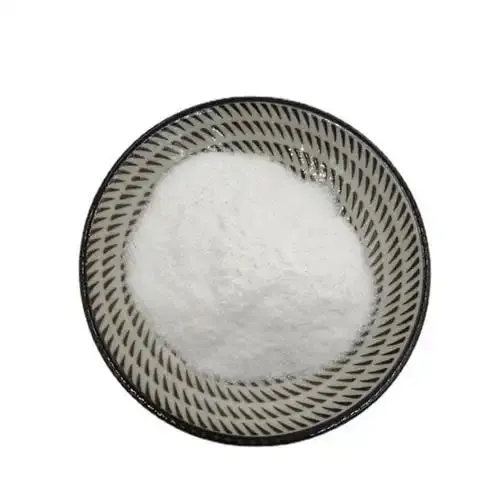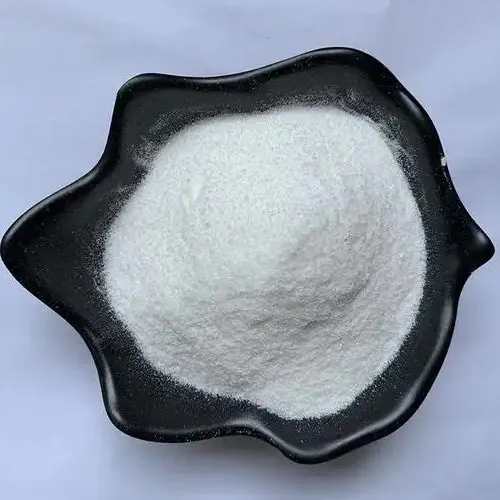
High Substituted Hydroxypropyl Cellulose for Superior Thickening and Stability
High Substituted Hydroxypropyl Cellulose (visit official product page) represents a cutting-edge cellulose ether widely adopted in industries such as petrochemicals, metallurgy, pharmaceuticals, construction, and water treatment. As global requirements for sustainable, high-efficiency, and versatile polymeric materials accelerate, High Substituted Hydroxypropyl Cellulose stands at the forefront owing to its excellent rheological properties, remarkable chemical stability, and robust adaptability in harsh environments.

1. Industry Dynamics & Market Trends
- Market Value (2023): Estimated at USD 980 million globally, CAGR of 6.5% (2023-2028). (Source: GVR Market Report)
- Main Applications: Oil & gas drilling fluids, concrete admixtures, pharmaceutical excipients (tablet binders & film coatings), coatings, adhesives, ceramic processing, and water conservation engineering.
- Growth Drivers: Regulatory emphasis on biodegradable, non-toxic, and efficient ingredients; increased investments in green infrastructure; ongoing pharmaceutical innovation.
- Challenges: Raw material price volatility, stringent process standardization (ISO 9001, FDA, USP, and ANSI compliances), and customization for end-use specificity.
2. Technology Parameters & Product Specifications
| Parameter | Typical Value | Industry Standard |
|---|---|---|
| Hydroxypropyl Substitution (Mol/AGU) | 2.8–3.2 | ISO 9001, USP35-NF30 |
| Viscosity, 2% in Water (mPa⋅s, 20°C) | 200-300 | GB/T 12015-2010| ASTM D1347-20 |
| pH (1% Sol’n, 25°C) | 5.0–8.0 | ANSI/NSF 60 |
| Moisture Content (%) | ≤5.0 | ISO 712 |
| Particle Size (Mesh) | 60–200 | ISO 565/3310-1 |
| Solubility | Water, Polar Solvents | FDA 21 CFR 172.870 |
| Thermal Stability (°C) | Up to 250 | ISO 11357 |
| Biodegradability | ✔ (Eco-friendly) | OECD 301B |
3. Manufacturing Process Flowchart & Quality Assurance
- Material Used: Natural, renewable cellulose fibers (cotton linters or wood pulp) meeting ISO 9001, FDA, and USP specifications.
- Main Equipments: Stainless steel reactors, continuous purification systems, CNC-controlled drying/milling, and inline QC laboratories.
- Testing Criteria: ISO/IEC 17025-compliant chromatography (viscosity curves), FTIR spectrometry, particle size analyzers.
- Service Life: Stable for 2–3 years when stored in dry, sealed conditions.
- Warranty: Batch-to-batch consistency guaranteed. Full ISO-compliant documentation for each shipment.
4. Applications & Performance Advantages

- Petrochemicals: Utilized as a viscosity modifier, fluid loss control agent and thickener in oil and gas drill muds. High Substituted Hydroxypropyl Cellulose exhibits superior salt/calcium resistance and temperature stability (180–250°C), improving drilling efficiency and lowering downtime by 8–13% compared to traditional cellulose ethers.
- Metallurgy: Employed in ore pelletization, refractory brick binders; provides high green strength and uniform agglomeration, withstanding high temperatures and corrosive atmospheres.
- Water Treatment: Used in membrane filtration, gel blockades, sludge dewatering—where chemical inertness and non-toxicity are critical.
- Pharmaceuticals: Acts as a GRAS excipient in tablet coatings and binders. The high-substituted variant enables precise control of drug release profiles and film integrity.
- Chemical Construction: Enhances rheology in cementitious materials and adhesives, leading to better slump retention, workability and surface smoothness.
Application of High Substituted Hydroxypropyl Cellulose in high-salinity well drilling in the Tarim oilfield reduced mud cost by 20% and improved wellbore stability vs. prior HEC formulas. In post-implementation QA, returned chemical contamination dropped by 38%.
5. Data Visualization: Technical Parameters & Performance Trends
6. Manufacturer Comparison Table
| Supplier | Certification | Customization | Delivery (Days) | Main Market |
|---|---|---|---|---|
| Tangzhih PMC | ISO 9001, FDA, USP, ANSI | Yes (Viscosity, Grade, Particle Size) | 7-18 | Asia, EU, North America |
| Chemtex Int’l | ISO 9001, HACCP | Partial | 18-24 | Americas, Africa |
| Dow Cellulosics | ISO 9001, REACH | Yes | 20-28 | EMEA, LATAM |
All featured suppliers adhere to global standards (ISO, USP, FDA) and provide COA/MSDS. Tangzhih PMC leads with rapid response and turnkey customization capacity for High Substituted Hydroxypropyl Cellulose demand across technical parameters and application grade.
7. Customization & Engineering Services
- Tailored Grade Development: Customized molecular substitution degree and viscosity profile for specific end-use such as ultra-high-salinity drilling, food/pharma compliance, or specialty adhesives.
- On-site Technical Support: Application engineers provide on-site mixing guidance, QC formulation, and compatibility testing.
- Compliance Protocol: Documentation for ISO 9001, FDA 21 CFR, USP-NF, and regional standards supplied with every batch.
- Sample Program: Free (up to 1 kg) pilot grade samples with 24–72h tech feedback turnaround.
- Logistics: Export-approved packaging, lot-tracing, and real-time shipment tracking.
8. Application Case Studies
| Project | Industry | Challenges | Results |
|---|---|---|---|
| Tarim Oilfield Drilling Muds | Petrochemicals | High-salt, high-pressure, fluid loss | 30% lower mud loss, improved wellbore integrity |
| Pharma Tablet Film Coating | Pharmaceutical | Fast dissolution, stability | Uniform film, |
| Desalination Filter Binders | Water Treatment | Corrosion, biological fouling | Improved filter life 2x, reduced chemical use |
| Shotcrete Additives (Metro Project) | Construction | Workability, pumpability | 20% longer slump retention window, smoother finish |
9. Delivery Cycle & Quality Commitment
- Sampling: 2–4 days for general technical samples.
- Mass Production: 7–18 days per batch, depending on grade and order volume.
- Warranty: Full return/replacement for off-spec goods; batch-to-batch tracking and COA (Certificate of Analysis) with every shipment.
- Support: 7x24h tech hotline, multilingual support (EN/ES/FR/CN), on-site guidance as required.
10. FAQ: High Substituted Hydroxypropyl Cellulose Professional FAQ
What is "degree of substitution" and why is 'high' important for HPC?
Answer: "Degree of substitution" (DS) refers to the average number of hydroxypropyl groups attached per anhydroglucose unit (AGU) in the cellulose backbone. For High Substituted Hydroxypropyl Cellulose, a DS of 2.8-3.2 ensures premium water solubility, better thermal/salt resistance, and enhanced dispersibility. This is crucial for applications in drilling fluids and specialty coatings.
What are the standard grades (viscosity ranges) available?
Answer: Grades range from 100–400 mPa.s (2% solution, 20°C) per ASTM D2196. Custom viscosities/flow profiles available upon request.
How does High Substituted HPC compare to HPMC or L-HPC?
Answer: Compared to Hydroxypropyl Methylcellulose (HPMC) or Low-Substituted HPC, High Substituted Hydroxypropyl Cellulose offers higher salt and thermal stability, nearly complete water solubility, and rapid film forming—ideal for high-performance industrial operations. See comparison bar chart above.
Which installation and compatibility standards are met?
Answer: Compatible with international standards: API 13A/B for drilling, FDA 21 CFR 172.870 for food/pharma, and ISO/USP protocols for quality. Custom grades provided with MSDS and technical bulletins.
Is the material bio-compatible and environmentally safe?
Answer: Yes, it's biodegradable per OECD 301B, GRAS certified, and safe for environmental discharge—ideal for use in sensitive environmental zones.
What is the shelf-life and recommended storage method?
Answer: Shelf-life typically 24–36 months in sealed, dry, shaded storage at room temperature.
What testing/inspection procedures ensure batch quality?
Answer: Each batch undergoes FTIR (functional group) analysis, laser particle sizing, double viscosity titration, and heavy-metal screening following ISO/IEC 17025 protocols.
Conclusion & References
As industry demands for reliability, eco-sustainability, and advanced rheological performance continue to shift, High Substituted Hydroxypropyl Cellulose stands out as the preferred solution for cross-industry challenges in petrochemical, water treatment, and pharmaceuticals.
-
Reliable Powdered Cellulose Supplier: Quality, Sustainability & InnovationNewsNov.24,2025
-
Find Trusted Microfibrillated Cellulose Suppliers for Sustainable Industrial SolutionsNewsNov.24,2025
-
Leading Methocel Suppliers: Quality, Innovation & Sustainability in Methylcellulose SupplyNewsNov.23,2025
-
Reliable Hydroxyethylcellulose Suppliers for Industry & Sustainability | Tangzhi HPMCNewsNov.23,2025
-
Top Ethyl Cellulose Supplier – Quality, Sustainability, and Industrial SupportNewsNov.23,2025
-
Trusted CMC Powder Suppliers for Food, Pharma & Industrial Use | Tangzhi HPMCNewsNov.22,2025





















